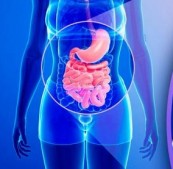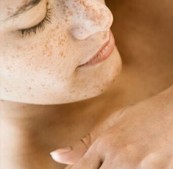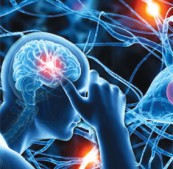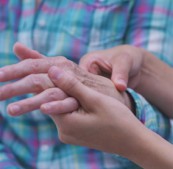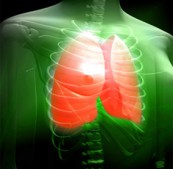Osteoarthritis

Osteoarthritis (OA) is a type of joint disease that results from the breakdown of joint cartilage and underlying bone. The most common symptoms are:
- Joint pain
- Stiffness
Other symptoms may include
- Joint swelling
- Decreased range of motion
- When the back is affected, weakness or numbness of the arms and legs
Osteoarthritis commonly affects the hands, feet, spine, and the large weight-bearing joints, such as the hips and knees, although in theory, any joint in the body can be affected like
- Near the ends of the fingers
- At the base of the thumb
- Neck
Osteoarthritis is believed to be caused by mechanical stress on the joint and low-grade inflammatory processes. It develops as cartilage is lost and the underlying bone becomes affected. As pain may make it difficult to exercise, muscle loss may occur. The condition similar to Osteoarthritis has been described as ‘Sandhigatavata’ in Ayurveda, in which the vitiated Vata afflicts the joints and causes destruction of the cartilages and reduction in the Synovial Fluid inside the joint capsule, leading to swelling which results into painful movement.
Brief with types
Based on the identifiable underlying cause, Osteoarthritis can be classified into
Primary, divided into 2
- Primary generalized nodal osteoarthritis and
- Erosive osteoarthritis (EOA, also called inflammatory osteoarthritis)
Less common and more aggressive inflammatory form of osteoarthritis which often affects the distal interphalangeal joints of the hand and has characteristic articular erosive changes on x-ray.
Secondary, based on joint affected,
- Hand
- Trapeziometacarpal osteoarthritis
- Wrist (wrist osteoarthritis)
- Vertebral column (spondylosis)
- Facet joint arthrosis
- Hip osteoarthritis
- Knee osteoarthritis
Signs & Symptoms (Lakshana):
The main symptoms are:
- Pain
- Loss of ability
- Stiffness- most common in the morning, and typically lasts less than thirty minutes after beginning daily activities, but may return after periods of inactivity.
Osteoarthritis can cause a crackling noise (called "Crepitus") when the affected joint is moved, especially shoulder and knee joint. A person may also complain of joint locking and joint instability. Increased pain associated with cold temperature, high humidity, or a drop in barometric pressure. In smaller joints, such as at the fingers, hard bony enlargements, called Heberden's nodes(on the distal interphalangeal joints) or Bouchard's nodes (on the proximal interphalangeal joints), may form, and though they are not necessarily painful, they do limit the movement of the fingers significantly. In toes, Osteoarthritis may be a factor causing formation of bunions( deformity in which the big toe often bends towards the other toes and the joint becomes red and painful), rendering them red or swollen.
Causes (Nidana):
Mainly caused by
- Previous joint injury
- Torn cartilage
- Dislocated joints
- Ligament injuries
- Abnormal joint or limb development
- Inherited factors
Risk factor is greater in those who are overweight, have one leg of a different length, and have jobs that result in high levels of joint stress.
Treatments:
Samshodhana Chikitsa is a specialized therapeutic approach of Ayurveda to eliminate toxins from the body by giving Panchakarma. It is usually followed by Shamana Chikitsa (Palliative therapy). But it should be decided by the physician according to the condition of the patient whether Shodhana therapy is indicated or not
- Local application
- Snehana (external): massage with medicated
- Snehapana (Internal Oleation
- Svedana (Medicated fomentation): ( localized or generalized hot fomentation)
- Panchakarmas
Shamana (Palliative) treatment-Basically with Ayurvedic medicine
Additional Treatment
Exercises
- Straight Leg Raise
Build muscle strength to help support weak. Lie on the floor, upper body supported by your elbows. Bend your left knee, foot on the floor. Keep the right leg straight, toes pointed up. Tighten your thigh muscles and raise your right leg. Pause, as shown, for 3 seconds. Keep your thigh muscles tight and slowly lower your leg to the ground. Touch and raise again. Do two sets of 10 repetitions. Switch legs after each set.
- Walking
Even if you have stiff or sore knees, walking may be a great exercise. Start slow, stand tall, and keep at it. You can ease joint pain, strengthen your leg muscles, improve your posture, and improve your flexibility. It's also good for your heart. Thirty minutes a day is a good goal. Start small, like with 10 minutes every other day. If you don't have pain, exercise more to meet the goal.
- Other alternative treatment options include: Physiotherapy
Prevention
When you make a plan to tackle your knee osteoarthritis (OA), don't overlook the power of food. There's no specific diet that treats your problem, but you can get some big health benefits if you eat smart. You'll keep your weight under control, build strong cartilage, and cut some inflammation. You don't have to make a major overhaul to your diet. Follow these simple steps to keep your joints happy.
- Cut Extra Calories-Your knees will feel better if you keep your waistline trim. When you drop those extra pounds, you'll put less stress on your joints. A good way to lower your calorie count: Take smaller portions, avoid sugary foods and drinks, and eat mostly plant-based foods.
- Eat More Fruits and Veggies-Feel free to eat plenty of these. Many are loaded with antioxidants -- substances that can help protect your cells from damage. Some antioxidants, found in fruits and veggies like apples, onions, shallots, and strawberries, may also help reduce joint inflammation and pain.
- Add Omega-3 Fatty Acids-Omega-3s may help relieve your joint pain and decrease morning stiffness. They work by reducing inflammation in your body. One easy way to add them to your diet is to eat two 3-ounce servings of fatty fish each week. Some of the best sources of omega-3s are trout, salmon, mackerel, herring, tuna, and sardines.
- Use Olive Oil in Place of Other Fats-One study shows that a compound in olive oil, called oleocanthal, helps prevent inflammation. It works in much the same way that NSAIDs do. Olive oils with the strongest flavor have the highest amount. About 3 1/2 tablespoons of olive oil offers the same relief as 200 milligrams of ibuprofen. But that much oil also gives you about 400 calories. To add olive oil to your diet without extra calories, use it in place of other fats, such as butter.
- Get Enough Vitamin C-A key element for joint health, vitamin C helps build collagen and connective tissue. A lot of tasty foods can give you this nutrient. Try citrus fruits, red peppers, strawberries, broccoli, cabbage, and kale. Aim for the recommended amount of 75 milligrams a day for women or 90 milligrams a day for men.
- Watch High Cooking Temperatures- Meat cooked at high temperatures makes compounds that can cause inflammation in your body. They're called advanced glycation end products (AGEs), and they're linked to diseases such as arthritis, heart disease, and diabetes. You can reduce your levels of AGEs if you cut back on grilled, fried, broiled, and microwaved meats. It’s also helpful to limit processed foods, as they are often cooked at high temperatures.
